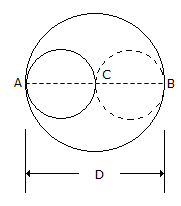Civil Engineering - UPSC Civil Service Exam Questions
Exercise : UPSC Civil Service Exam Questions - Section 16
- UPSC Civil Service Exam Questions - Section 14
- UPSC Civil Service Exam Questions - Section 27
- UPSC Civil Service Exam Questions - Section 26
- UPSC Civil Service Exam Questions - Section 25
- UPSC Civil Service Exam Questions - Section 24
- UPSC Civil Service Exam Questions - Section 23
- UPSC Civil Service Exam Questions - Section 22
- UPSC Civil Service Exam Questions - Section 21
- UPSC Civil Service Exam Questions - Section 20
- UPSC Civil Service Exam Questions - Section 19
- UPSC Civil Service Exam Questions - Section 18
- UPSC Civil Service Exam Questions - Section 17
- UPSC Civil Service Exam Questions - Section 16
- UPSC Civil Service Exam Questions - Section 15
- UPSC Civil Service Exam Questions - Section 1
- UPSC Civil Service Exam Questions - Section 13
- UPSC Civil Service Exam Questions - Section 12
- UPSC Civil Service Exam Questions - Section 11
- UPSC Civil Service Exam Questions - Section 10
- UPSC Civil Service Exam Questions - Section 9
- UPSC Civil Service Exam Questions - Section 8
- UPSC Civil Service Exam Questions - Section 7
- UPSC Civil Service Exam Questions - Section 6
- UPSC Civil Service Exam Questions - Section 5
- UPSC Civil Service Exam Questions - Section 4
- UPSC Civil Service Exam Questions - Section 3
- UPSC Civil Service Exam Questions - Section 2
26.
When two roads with two-lane, two-way traffic, cross at an uncontrolled intersection, the total number of potentional major conflict points would be
27.
If the load, warping and frictional stresses in a cement concrete slab are 210 N/mm2, 290 N/mm2 and 10 N/mm2 respectively, the critical combination of stresses during summer midday is
28.
From a circular plate of diameter D, whose centre is C, another circular plate of diameter AC is cut, removed and kept over CB (in the given figure). The thickness of the plate is uniform. The shift of the centroid due to this operation will be


29.
Consider the following statements :
1. Infiltration galleries are placed along the river beds at a depth of 4 to 6 m.
2. The draw-down for the infiltration galleries is more than that for radial wells.
3. Clogging of pipe pores in inflitration galleries is less than that for radial wells.
4. The cost of extracting unit volume of water is more in case of infiltration galleries as compared to radial wells.
Which of the statements given above is/are correct ?
1. Infiltration galleries are placed along the river beds at a depth of 4 to 6 m.
2. The draw-down for the infiltration galleries is more than that for radial wells.
3. Clogging of pipe pores in inflitration galleries is less than that for radial wells.
4. The cost of extracting unit volume of water is more in case of infiltration galleries as compared to radial wells.
Which of the statements given above is/are correct ?
30.
What is the actual ground area covered by a 20 cm x 20 cm size vertical aerial photograph, at an average scale of 1 cm = 200 m having 60% forward overlap and 30% side overlap ?
Quick links
Quantitative Aptitude
Verbal (English)
Reasoning
Programming
Interview
Placement Papers